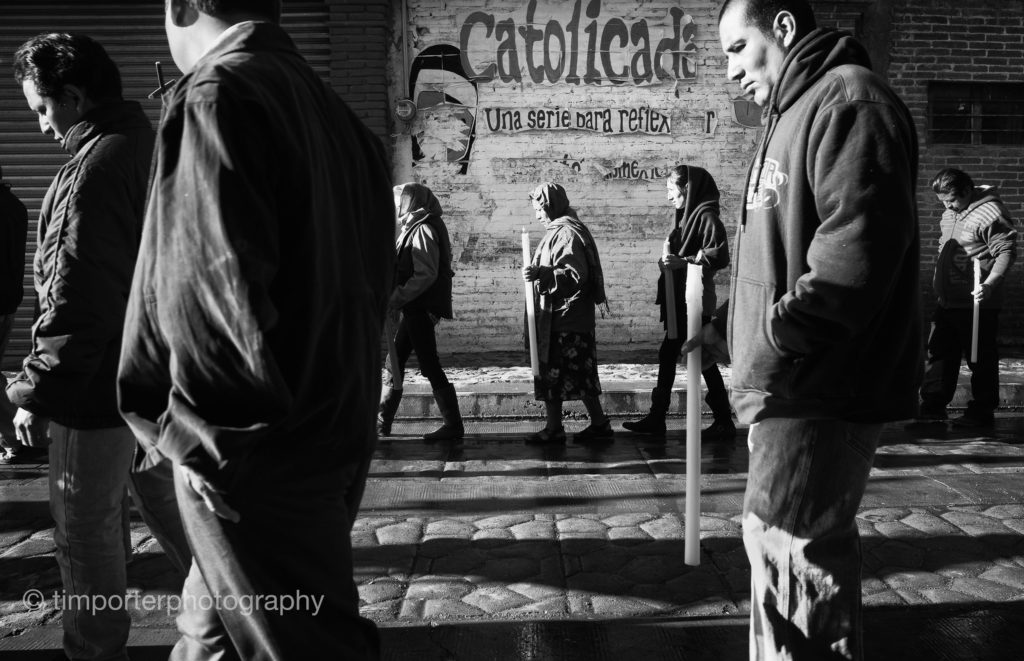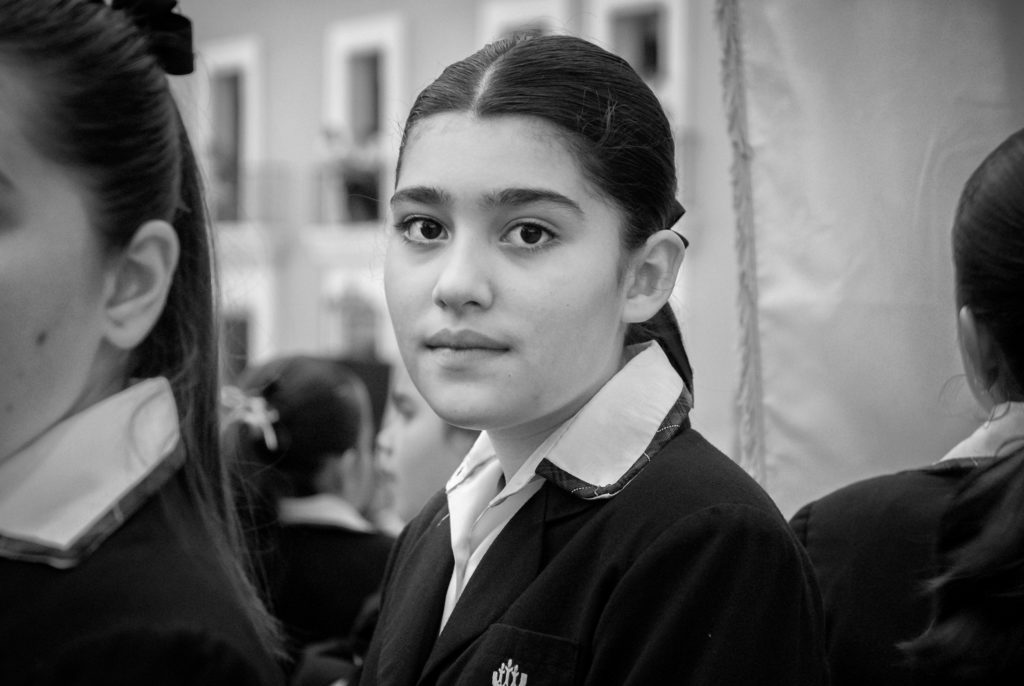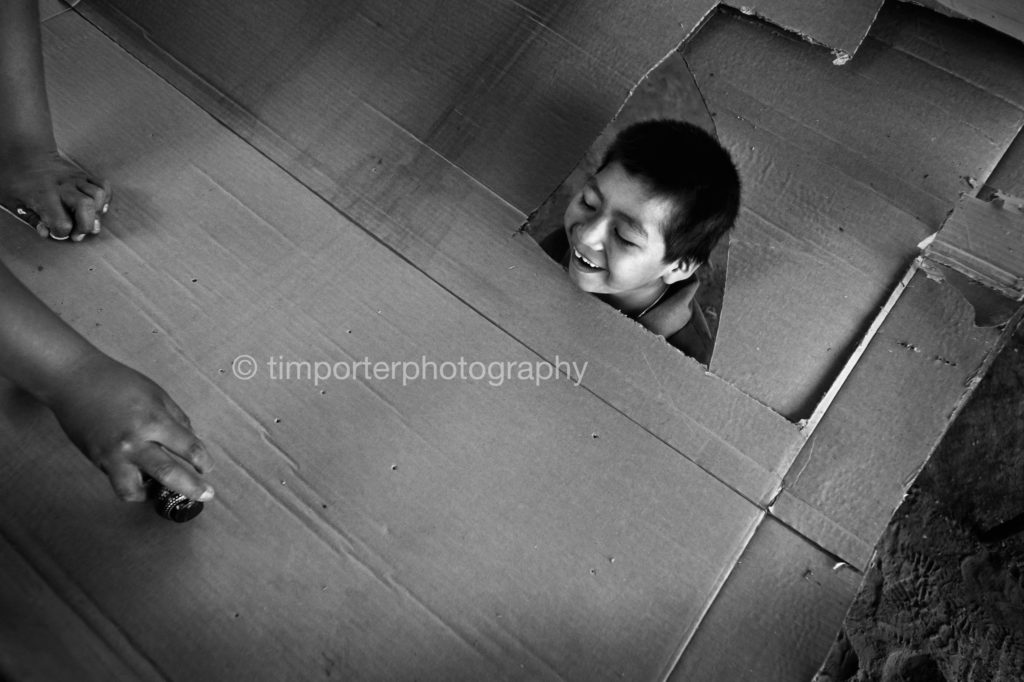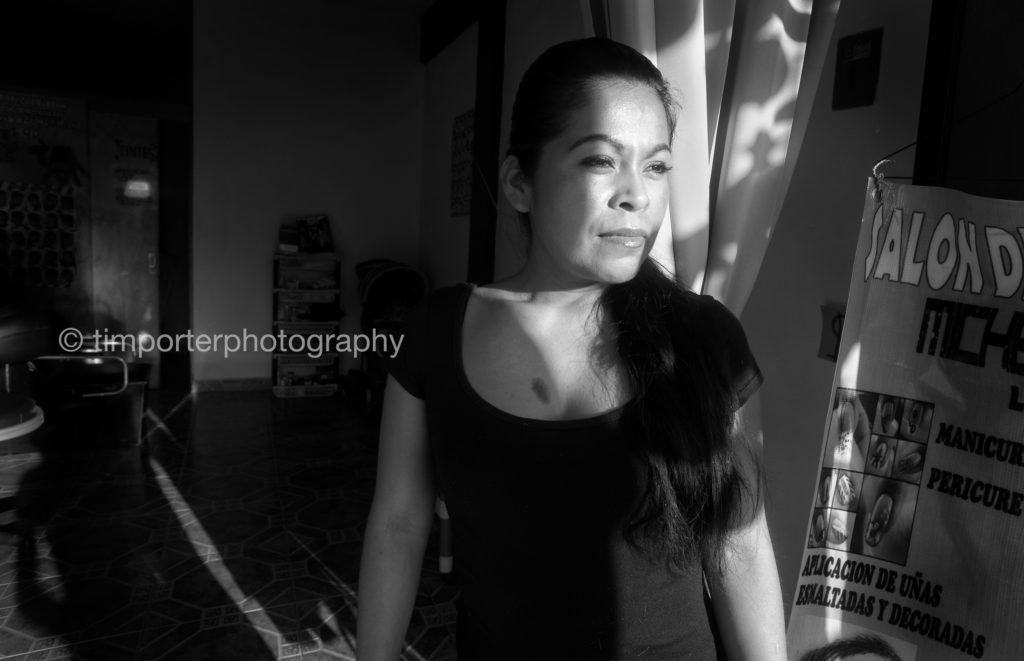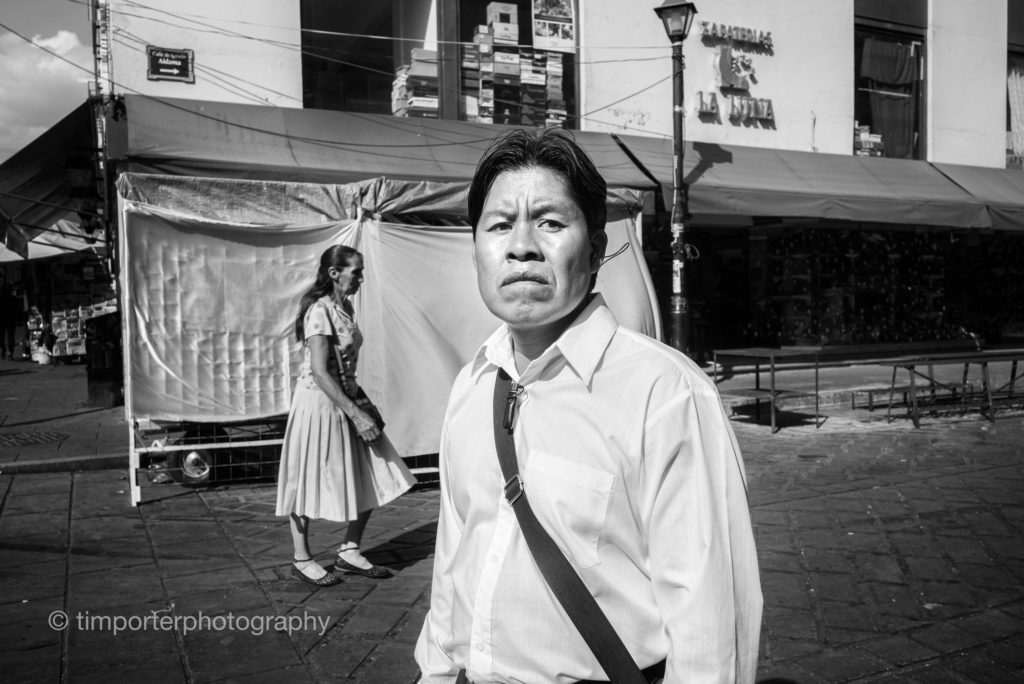
When I photograph on the street, which I do often, I wonder if the images I make represent what is really there of if they result from something for which I am looking. In other words, do I find only what I seek?
In my pictures, I see tension and stress and pressure. Of all the thousands of people on the streets, am I only drawn to the tense, the stressed and the pressured? I must be fascinated by their difference from me – or perhaps their sameness.
Amid the crush of the crowds on street corners, on buses and in markets, I see so much isolation. People hold deep into themselves, hearts girded and faces hardened for another day’s battle in a life-long war. Mexico gives nothing freely and yields its comforts only to the most enduring or the most privileged.

